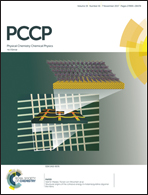Thermoelectric properties of Se and Zn/Cd/Sn double substituted Co4Sb12 skutterudite compounds
Abstract
Double-doped skutterudite Co4Sb12 compounds are reported as a good n-type thermoelectric system which operate in the mid-temperature range. Instead of filling the skutterudite phase to minimize the thermal conductivity, it is proposed to induce disorder in the pnicogen rings by the substitution of Zn/Cd/Sn and Se. Structural analyses of the prepared compounds were carried out by Rietveld refinement process. The compounds show overall reduction in thermal conductivity, particularly the lattice part. Since vibration modes of heat-carrying phonons predominantly fall within the frequency range of the pnicogen rings, double substitutions on those pnicogen rings are particularly helpful in distracting the thermal transport. As larger mass difference and strain fluctuations can more efficiently scatter the heat-carrying phonons through short mean free path, it drastically restrains the thermal transport of the compounds, and this effect has been successfully demonstrated using the Debye–Callaway–Klemens model. Smooth electrical transport behavior is observed in all the samples and the power factor values are quite comparable to reported values. Phonon scattering mechanism and local distortion in the structure of the compounds is also evaluated by Raman analysis. Collectively, a high peak ZT of ∼0.7 and ∼0.65 at 673 K is obtained for Co4Sb11.86Se0.1Zn0.04 and Co4Sb11.86Se0.1Sn0.04 compounds which shows more than 50% enhancement relative to the pristine Co4Sb12 system.



 Please wait while we load your content...
Please wait while we load your content...